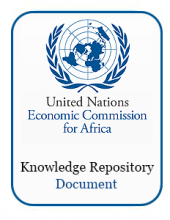Land Library Search
Through our robust search engine, you can search for any item of the over 73,000 highly curated resources in the Land Library.
If you would like to find an overview of what is possible, feel free to peruse the Search Guide.
/ library resources
Showing items 1 through 9 of 33.Mission Statement: "The Back Pack Health Worker Team (BPHWT) is an independent, nonprofit, multi-ethnic organization dedicated to providing primary health care to ethnic groups and vulnerable populations in armed conflict and rural areas of Burma, where access to healthcare is otherwise unavailab
In Thailand's Tak province there
are 60,520 registered migrant
workers and an estimated 150,000
unregistered migrant workers from
Burma. Fleeing the social and political
problems engulfing Burma, they are
mostly employed in farming, garment
The plight of Burma's internally displaced persons has largely been overlooked by the
international community and the Burmese government itself. Villagers in the country's war
zones nevertheless have suffered for decades the adverse effects of conflict. For some,
Africa is the fastest urbanizing region in the world, with the population doubling almost every
20 years. The rural population is growing at a rate of 2.5 per cent per annum, while the urban
population is experiencing 5-10 per cent growth per annum. Urbanization becomes a source
According to the current land utilization, about 11 million hectares or 16% of the total land area is under cultivation.
CONCLUSIONS AND RECOMMENDATIONS:
Summary: China’s trade in timber products with Myanmar grew substantially from 1997-2002, from 295,474 m3
(round wood equivalent, RWE) in 1997 to 947,765 m3 (RWE) in 2002. Despite increased volume,
Burma’s poverty means that even providing funerals for loved ones can be difficult if not impossible. But a new social welfare association is lending a helping hand...
In recognition of the problem of land tenure security and its effect on sustainable development, a study on Land tenure systems and sustainable development in Southern Africa was included in the ECA-SA work program. A draft publication on the findings of the study has been prepared.


